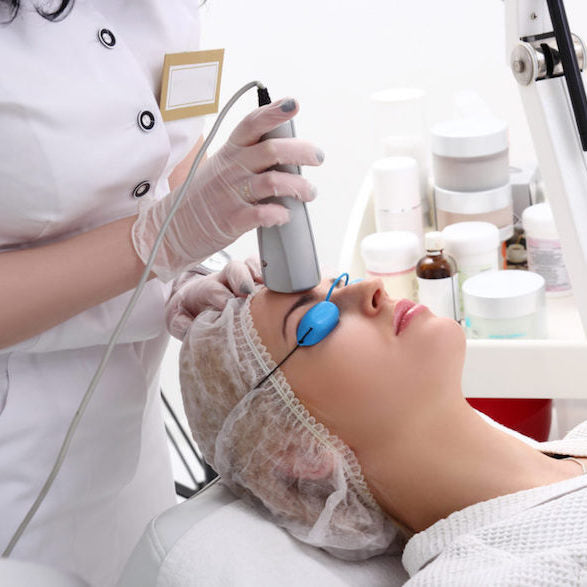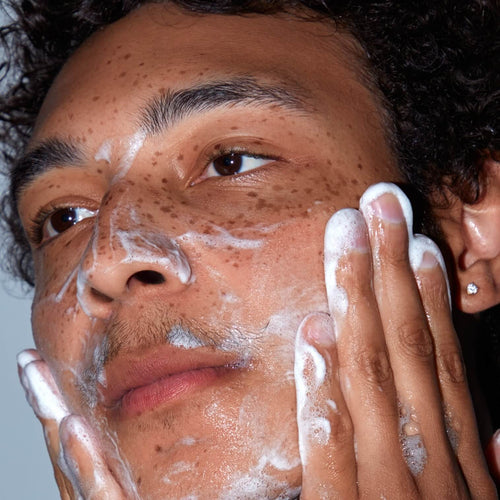
What You Need to Know About Laser Skin Treatments
If you’re somewhat into skincare or completely obsessed with it, chances are you’ve heard about laser skin treatments. Lasers can be used to treat a plethora of skincare woes, from acne scarring to discoloration, to stretch marks and even tattoo removal. If you have a stubborn skin problem and you’re looking for a more permanent fix,…
Published:
5 minute read
If you’re somewhat into skincare or completely obsessed with it, chances are you’ve heard about laser skin treatments. Lasers can be used to treat a plethora of skincare woes, from acne scarring to discoloration, to stretch marks and even tattoo removal. If you have a stubborn skin problem and you’re looking for a more permanent fix, lasers might be the one.
Given that they are able to treat a variety of skin conditions, lasers aren’t one size fits all. There are lots of different types and each one is effective for different issues. To give you a sense of which laser treatment might work best for you, we’re breaking down four of the most common laser treatments to help you decide if lasers could be the right solution for you.
Resurfacing lasers are either fractionated or non-fractionated. Fractionated lasers are more commonly used because they stimulate collagen and elastin production in the dermis, whereas older, non-fractionated ablative lasers only work on the epidermis, the top layer of the skin.
Fractional lasers work by treating tiny microscopic dot-size areas of the skin, while leaving a small area of normal surrounding skin untreated (i.e. only treating a “fraction” of the skin). This allows for faster healing and less discomfort.
There are two types of resurfacing lasers: carbon dioxide, which treats conditions like scars and warts, and erbium and can be used to treat deeper lines and wrinkles. The choice to use carbon dioxide vs. erbium is mostly dependent on dermatologist preference.
Cost: You’ll probably pay between $500 and $1000 per treatment for resurfacing, and sometimes it takes three to five sessions for results to really become noticeable. On top of that, some patients opt for annual touch-ups.
Recovery: It takes an average of about five days to recover from a fractionated laser procedure, but the skin will take longer to heal from non-fractionated laser treatments.
Vascular Lasers
What it treats: These lasers emit wavelengths of light aimed at tiny blood vessels under the skin. The heat from these beams cause the vessels to disintegrate, so the main goal of these treatments would be to reduce any kind of redness. This discoloration can stem from broken blood vessels, cherry angiomas, rosacea, scars, and stretch marks. Paired with a KTP laser, dermatologists can often target areas with more blue or purple discoloration as well.
Cost: Most patients need two or three sessions to see improvements, and prices range from $150 to $600 each.
Recovery: The side effects of this one are pretty mild; you might experience some sunburn-esque redness, slight bruising and minimal scabbing.

Tattoo Removal Lasers
What it treats: Tattoo removal lasers use high-intensity light beams to break up pigments and remove permanent tattoo ink from the skin. Did you know nearly 25% of people who have tattoos say they have regrets about them? Well, there’s good news: laser tattoo removal professionals are becoming increasingly accessible, so the odds of getting a second chance at clear skin just got better. Black is the easiest pigment to remove since it absorbs all light frequencies, but other colors are not so simple.
Cost: Depending on the size of the piece you want to remove, you’ll definitely need to book multiple sessions for completely clear skin. You can expect to pay between $200 and $400 for each treatment.
Recovery: This treatment poses a risk of scarring, lightening or darkening of the skin, textural changes, rash, scarring, and infection, but the side effects aren’t too severe. You also run the risk that your tattoo won’t actually be removed, just faded. Since laser tattoo removal can be hit-or-miss, some people opt to revitalize their old tattoos instead.
Hair Removal Lasers
What it treats: Hair lasers target pigments (aka melanin) in follicles to remove unwanted hair from parts of your body you’d prefer to be silky-smooth. Some people believe that the treatment is most effective on patients with high contrast between their hair and skin. They’re only effective on terminal hairs, dark hairs which typically appear on the upper lip, armpits and pubic areas. These hairs are thicker and contain more melanin that the laser can target.
Hair lasers have different wavelengths, which can penetrate different shades to properly remove hair from people of all complexions. Because of the nature of these lasers, the best candidate for laser hair removal is a light skinned person with dark hair.
However, there are some caveats. Those with darker skin types (whether you’ve got Greek or African ancestors) can have problems, as the laser can inadvertently target the melanin in your skin instead of in your hair follicle. This increases the risk of skin discoloration, and in these patients, the long pulsed Nd:YAG laser is the safest. Using the wrong wavelength can cause severe burns, so make sure you’re seeing a specialist with a good reputation working on your skin type.
Cost: These sessions are usually between $200 and $400 and require an average of three to seven visits for long-term results.
Recovery: Similar to other treatments, you might experience sunburn-like redness, but nothing that a cold compress or moisturizer can’t fix! As your hair falls out of the treated areas, you’ll want to make sure you use sunscreen to protect newly-exposed skin. In rare cases, blisters or swelling may occur, but permanent scarring is very uncommon.
The bottom line on skin laser treatments?
With any of these treatments, you may experience temporary heightened sensitivity to sunlight, so it’s important to use sunscreen diligently. You should keep your freshly lasered skin moisturized and only use oil-free cosmetics.
Other risks include burns, scarring, changes in skin pigmentation, inflammation of cold sores, or infections from the procedure. Like with any procedure, it’s important to consult your doctor to go over any potential risks or side effects that may occur based on your medical history or skin type — ensuring that you have the best treatment, possible!
Dr. Ashley Steffens, a dermatology resident at Southern Illinois University School of Medicine (SIU), helped contribute to the accuracy of this story.







